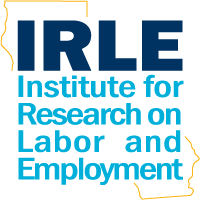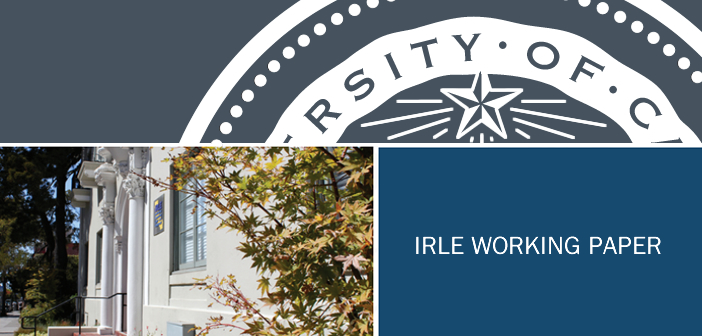Introduction
One of the most venerable chestnuts in American political development is the question of why no socialism in America, sometimes cast as the question of why American labor has appeared so politically conservative and workplace oriented compared to its European counterparts. The array of answers is well-known: the
American working class inevitably developed middle class values because “America was born liberal;” American workers grew fat and complacent on “roast beef and apple pie;” ruthless business leaders used the power of the state to crush radical labor organizations; it is impossible to sustain labor solidarity with such a racially and ethnically diverse labor force.
The debate is a rich one in part because none of these arguments has proven fully satisfactory. We know that each of these features of American political and economic life — national values, broadly-shared economic prosperity, business power, and racial and ethnic division — has varied in content and salience over time. Moreover, it is clear that movements for a more politically-oriented labor radicalism have periodically emerged but that such impulses have proven difficult to sustain over time. Historically-rooted analyses improve upon these general explanations by showing how American political institutions – especially political parties – stifled a broadly political labor consciousness. Ira Katznelson, for example, has argued that the territorial and ethnic orientation of political parties in the United States created a split between the politics of work and home. Richard Oestreicher has argued that the two-party system organized around ethno-religious cleavages blocked efforts to build labor issues into politics. Despite repeated efforts to foster a broader socialist labor consciousness, these ideas could not take hold given the organizational structure of American politics.
Most historically-oriented research shows how institutions restricted the ideological range of American labor by examining developments in the nineteenth and
early twentieth centuries. As the era when labor’s political engagement in the United States began to diverge from its European counterparts, developments during this period had repercussions far into the future. Yet, the period during and after the New Deal generated major shifts in the laws authorizing labor mobilization and in the organizational development of labor. Research examining this era explores labor’s setbacks in the 1940s, including the failure to organize the South and the passage of the restrictive Taft-Hartley Act. We also have studies of labor’s activities in national politics since the 1940s, especially its close relationship with the Democratic Party. We know much less about the subnational organizational evolution of labor in the postwar era and
how conflicts within labor helped determine the organizational forms through which labor defined and pursued its goals thus influencing the scope and substance of its political engagement, and the development of liberalism more broadly. Yet, strong subnational capabilities were essential for labor to extend its reach “beyond the plant gates:” labor political mobilization required ground-level organizing capacities and a broad social agenda required influence in state politics, where responsibility for many key social issues rested even after the New Deal.
This paper examines the postwar political development of American labor by exploring the tensions between labor’s vertically-organized, workplace-oriented union structure for organizing workers and its territorially-organized, politically-oriented federation structure for political mobilization and public policy influence. Drawing on material from AFL-CIO archives in the 1950s and 1960s, I show that even at the height of their power, liberal labor leaders proved unable to project their power throughout the complex organizational structure of “the labor movement.” Their failure to strengthen labor’s state and local organizational capacities, I show, contributed to the difficulty in mobilizing union members as a reliably progressive force in electoral politics and reinforced the narrow union orientation that characterized labor’s engagement with policy at the state and local levels. These mobilization failures and policy limitations were especially salient for understanding the relationship between organized labor and the urban poor.
The existing literature takes two diametrically opposed views about the key political question of labor’s representation of the poor during the postwar decades. Jill Quadagno, for example, argues that union racism played a key role in killing the War on Poverty. By contrast, other analysts portray unions as the key mobilizers of the poor during this era or as a central advocate of the interests of the poor in national policymaking. I argue that both perspectives are flawed because they failed to consider how the complex organizational structure of labor allowed it to be simultaneously in the vanguard of federal efforts to expand policies for the poor and a key obstacle to implementing effective policies. These underlying divisions within organized labor prevented it from building a new postwar organizational structure that would allow it to press for expansive social policies at all points in the federal system.
This meant that when specific unions backed policies to assist the poor, the organizational vehicles they supported – the community-based nonprofit organizations that flowered in cities across the United States during the War on Poverty – failed to alter labor’s formal organization in ways that would support political mobilization or build universalist approaches to social policy into labor’s legislative efforts. As a result, the War on Poverty did little to cement a lasting institutional relationship between labor and the community-based organizations, weakening the capacity of both.
The spread of the nonprofit model bequeathed an ambiguous legacy for later attempts to address poverty. While unions and their Democratic allies in Congress continued to support policies to improve conditions for the poor, their mixed agenda and diminishing power during the subsequent decades meant that much of the task for representing the poor fell onto the diverse collection of local nonprofit organizations that became the institutional mainstay in low-income neighborhoods. Despite the tremendous growth and diversity of the nonprofit sector, it provides a peculiarly limited form of representation for the poor, with restricted mobilization capabilities and weak vertical linkages needed to build ongoing political efficacy.

